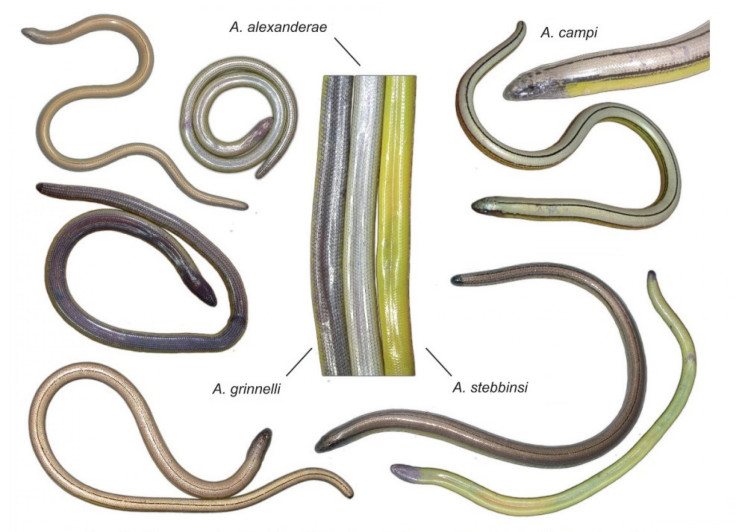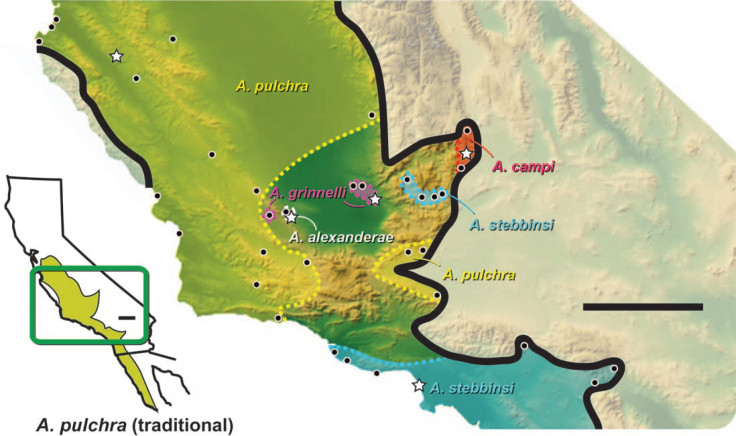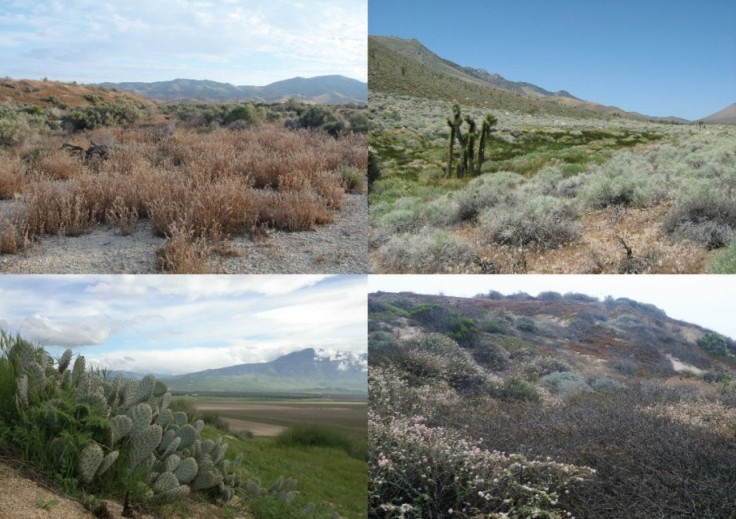4 New Legless Lizard Species Discovered In California, Have Existed For ‘Millions Of Years’ [PHOTOS]

Four new species of legless lizards have been uncovered in some very unassuming locations in California.
California biologists found the reclusive legless lizards in a vacant lot in downtown Bakersfield, in oil derricks in the lower San Joaquin Valley, on the margins of the Mojave Desert, and at the end of a runway at Los Angeles International Airport, according to a statement from University of California Berkeley.
“You don’t have to go to remote places to find biodiversity,” Ted Papenfuss of UC Berkeley's Museum of Vertebrate Zoology said. “California has so much biodiversity we’re not even aware of.”
The species, described in a paper published in Breviora, resemble a slithering snake and were initially believed to belong to a single species, but this latest discovery proves otherwise. Over the past 15 years, Papenfuss and his colleague James F. Parham of California State University, Fullerton, collected samples of the legless lizards throughout the state and began analyzing their DNA, finding they were actually four new species, each with unique DNA, belly color, number and arrangement of scales, and number of vertebrae.
While the four species had been previously collected and displayed in collections around California, when preserved in alcohol they lost their distinctive markings and looked identical.
“These are animals that have existed in the San Joaquin Valley, separate from any other species, for millions of years, completely unknown,” Parham said. “If you want to preserve biodiversity, it is the really distinct species like these that you want to preserve.”
The legless lizards, which are represented by more than 200 species worldwide, evolved to become limbless in order to burrow into sand like snakes. They're rarely seen because they spend most of their time underground eating insects and larvae. To lure them into view, Papenfuss set up pieces of cardboard throughout the state to act as resting or hunting grounds for the reclusive lizards. He found three new species this way, each named after UC Berkeley naturalists.


A. alexanderae, named after Annie Alexander, who endowed the UC Berkeley museum in 1908 and added 20,000 specimens to its collections; A. campi for Charles Camp, because of his early-career discovery of the Mt. Lyell salamander in the Sierra; and A. grinnelli after Joseph Grinnell, first director of the zoology museum.
The fourth species, found under a pile of leaves near the Los Angeles International Airport, was named A. stebbinsi after Robert C. Stebbins, a nationally known Berkeley lizard specialist.
"These four new species must have once been abundant everywhere in the state," Papenfuss said, "but now it looks as though the unrestricted and growing spread of buildings everywhere has restricted their habitat severely -- more evidence of a serious threat to California's biodiversity."
And the California biologists insist they’re not finished looking for legless lizards. “This is only the beginning of the story,” Parham said. “We need to further study each species’ distribution. At this point, each species has quite small ranges, and if that’s truly the case, more monitoring of their habitat needs to be done. If we lose those small spaces, we’ll lose those species.”
© Copyright IBTimes 2025. All rights reserved.




















